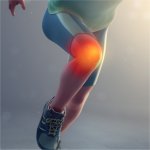Researchers were able to create a model to predict which patients suffered from patellar tendinopathy based off of common tests of the hip and ankle.
Researchers examined 192 athletes and tested for foot alignment, ankle mobility, hip mobility, and hip strength. The researchers conducted a classification and regression tree analysis to identify the interacting factors that were associated with patellar tendinopathy. The researchers found that using hip internal rotation range of motion, shank-forefoot alignment, hip external rotation strength, and hip abduction strength, they were accurately able to predict which athletes had patellar tendinopathy and which did not.
Overall, the statistical model created by the researchers had a 71.2% sensitivity and a 74.4% specificity.
Conclusions
Many studies that examine only one variable in isolation, such as hip range of motion or hip abduction strength, are less likely to find correlations between identifiable risk factors and clinical outcomes. This study is extremely useful because it examined the interaction between multiple relevant factors and found a much more meaningful, clinically useful method for predicting injury.
The criteria used in the injury prediction model, such as hip mobility and hip strength, are very easy to measure and can be repeated by clinicians in a therapy setting, making this even more useful.
The ultimate findings of the study lend support to the ”joint-by-joint approach” which suggests that when the hip is lacking mobility, people often compensate by creating extra motion at the nearby joints such as the knee. This likely explains why a lack of hip internal rotation was associated with the knee pain.
References
